Sir Richard Francis Burton was an English explorer, writer, soldier, orientalist, ethnologist, linguist, and poet. He was well known for his travels and explorations within Asia and Africa as well as his extraordinary knowledge of languages and cultures. One of his most famous works was the translation to English of The Thousand and One Nights, commonly known as "Arabian Nights", a stunning work of story telling, literature, as well as translation.
Burton's best-known achievements include travelling and journeying with John Hanning Speke to discover the Great Lakes of Africa in search of the source of the river Nile. He was a prolific author and wrote numerous books and scholarly articles about subjects including travel, fencing and ethnography.
He was a captain in the army of the East India Company serving in India and the Crimean War. Following this he was engaged by the Royal Geographical Society to explore the east coast of Africa and led an expedition which discovered Lake Tanganyika. Burton was considered a controversial figure in his day and, while some considered him a hero, others considered him a scoundrel. In any case, his incredible ability with languages and the art of translation stands out among the backdrop of the Victorian era.
"Arabian Nights" takes place in the second Persian Empire (226 - 651). When the king discovers his wife plotting with a lover to kill him, he has the pair executed.
Believing all women to be likewise unfaithful, he gives an order for a new wife every night, and after spending one night with his bride, the king has her executed at dawn. This practice continues for some time, until Sheherazade volunteers to become the king's next wife. Each night she spends hours telling him stories, each time stopping at dawn so the king will postpone the execution out of a desire to hear the rest of the tale. In the end, she has given birth to three sons, and the king has been convinced of her faithfulness and revoked his decree.
The tales told in "Arabian Nights" vary widely; they include historical tales, love stories, tragedies, comedies, poems, burlesques and Muslim religious legends. Some of the famous stories Shehrazade tells in the western translations are Aladdin's Lamp, the versions of Sindbad the Sailor, and Ali Baba and the Forty Thieves.
Sir Richard Francis Burton's translation is probably the best known among English speakers; formally entitled The Book of the Thousand Nights and a Night it was first published in 1885. Unlike previous editions, his ten volume translation was not bowdlerized. Though printed in the Victorian era, it contained all the erotic nuances of the source material, something unheard of for a published work of the time. Burton circumvented strict Victorian laws on obscene material by printing an edition for subscribers only rather than formally publishing the book. Although controversial at the time, today the rich narrative content far outweighs any titillating component of the work.
The Conway Stewart Arabian Nights, like Burtons translation itself, is a rich tapestry of both form and texture. Utilising the art of filigree, which requires twisting and plaiting fine threads of silver wire to form an intricate design, the Arabian Nights is a visual feast. The filigree design is carefully constructed one piece at a time by the artist, with each individually wound and twisted piece of silver wire set into place and secured to create jewellery of infinite beauty.
Filigree represents the marvellous and limitless fusion of imagination and artistry. Although filigree works of art consists of mainly plant life, animals and birds, the tradition does not limit the craftsman from innovating and experimenting with their skill. Our silversmith, renowned for his jewellery work, has chosen to apply his great knowledge and vast experience to create an intricate woven web of abstract filigree. This jewellery work wraps securely around our solid 18 carat gold cap and barrel, providing a rich contrast to the gleaming silver of the filigree.
The filigree work on the Arabian Nights is so intricate you have to examine the pieces with a magnifying glass to truly appreciate the meticulous craftsmanship. The quality appears almost regal.
Whether considered as a fine writing instrument, or as the highest expression of the silversmith's art, the Conway Stewart Arabian Nights is a truly unique and amazing work of art.
ARCHIVE
Conway Stewart 'Arabian Nights', 2007
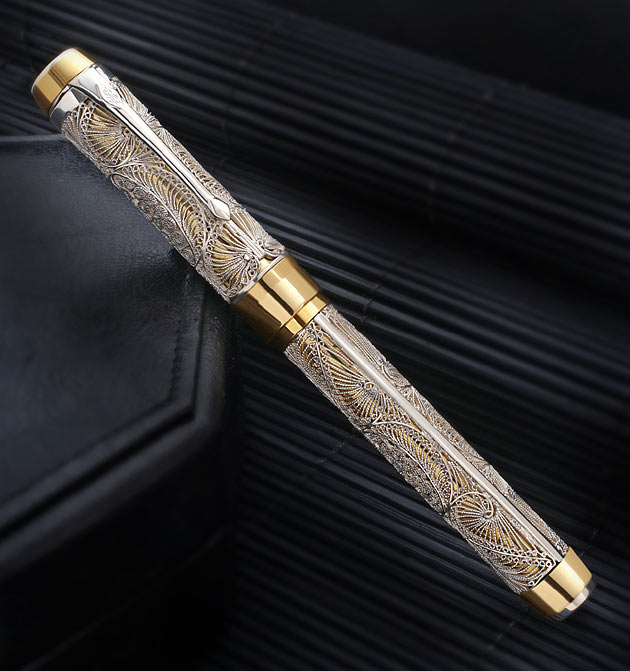
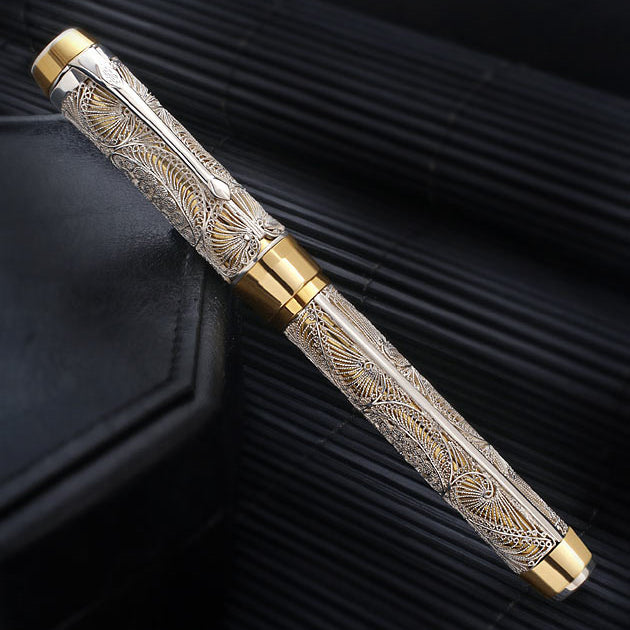

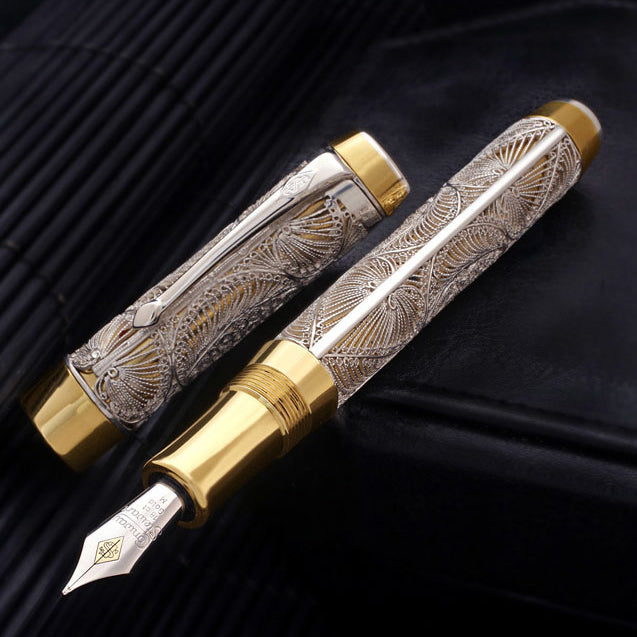
Archive Blog Posts
WES Journal edition #126, Winter 2023
Spotlight on Conway Stewart Originally published in WES Journal 126, pp 26-29, 2023
The History of Conway Stewart
The Beginning In 1905, Mr. Frank Jarvis and Mr. Tommy Garner formed Conway Stewart & Co. Limited at 13 Paternoster Row LondonEC1, next to St Paul’s Cathedral in London. Today,...
Conway Stewart 'Babbage'
Charles Babbage is popularly known as the “Father of Computing” for his pioneering work with computing machines. The use of Jacquard punch cards, chains and subassemblies, and the logical structure...
Conway Stewart Evergreen Sterling Silver Duro Special Edition
SOLD OUT! Retail List Price Fountain Pen or Roller Ball — £599 $970 €630 Welcome to our February 2010 Special Edition — the Conway Stewart Evergreen. Based on our popular Sterling Silver Duro model,...
The Balmoral
Following the success of our Windsor, which was inspired by the ornate decoration gracing the creations of English gunsmiths, Conway Stewart is pleased to announce the second in this prestigious...
Conway Stewart Cavendish Edition
Conway Stewart is proud to announce our new model in English hallmarked solid sterling silver, the Cavendish. A bold stylish design that brings together a traditional shape with a crisp...
Conway Stewart 'Elizabeth Garrett Anderson' Limited Edition
Elizabeth Garrett Anderson is regarded as England’s first female doctor; a pioneer in educating women in medicine; a strong supporter of women’s suffrage and opportunities in higher education, as well...
The Wellington Series
Arthur Wesley was born in Dublin in 1769. In 1798, his aristocratic Anglo-Irish family changed their name to Wellesley. In honour of Sir Arthur Wellesley, Conway Stewart commemorates the Duke...
Professional Series - Doctor's & Lawyer's Edition
The new Conway Stewart Professional Series is designed to reflect the dedication and life’s work of individual professional fields. These striking new designs are crafted of gleaming black resin and...
Kipling 'IF' Special Edition
The new Special Edition from Conway Stewart is inspired by one of the most important literary figures in English history. At first glance this pen looks like it has a...
Conway Stewart Belliver Series
The new Belliver model from Conway Stewart is a return to the finest traditions of CS heritage, rooted in attention to detail, a perfect size and weight, as well as...
Conway Stewart Montague and Capulet Series II
The 2013 Montague and Capulet series from Conway Stewart celebrates the principal characters of Shakespeare’s eternal classic Romeo and Juliet, bringing a graceful and elegant slim design to life in...
Excalibur Limited Edition
Conway Stewart is pleased to announce the latest new colour on the popular Churchill model — Excalibur with hallmarked solid sterling silver trim. The Churchill Excalibur hand made resin consists of a...
Conway Stewart Edwardian Limited Edition
Conway Stewart is proud to present our new limited edition sterling silver series, ‘The Edwardian’. Based on our popular Belgravia model, the Edwardian is completely crafted from solid sterling silver...
Conway Stewart Gatsby Limited Edition
“Nominee in the 2014 Pen World Reader’s Choice Awards — Best Cultural or Historical Theme” During the classic era of the 1920s, a fine fountain pen was considered not just a luxury,...
60th Anniversary 100 Series Special Edition - Pistachio
60th Anniversary Celebration! The 100 Series was first launched in 1954 and was quick to become one of the most popular Oversize pens ever made by Conway Stewart. In celebration...
Marlborough Vintage Limited Edition Pens
The Conway Stewart Marlborough Vintage Limited Edition is a distinguished new design, that is inspired by the classic styling of our vintage models and created with our present day manufacturing...
Jaguar Limited Edition
The Conway Stewart Jaguar is a new finish to compliment our sold out Elegance Aztec limited edition. Each pen from the Elegance range has a unique design and is produced...
Conway Stewart Collectors Club - Celebration Pen & Book Special
Offered only to members of our Collectors Club, Conway Stewart is making available the Celebration pens accompanied by a hardback copy of the new book, Fountain Pens for the Million — The...
Conway Stewart Collectors Club - Churchill Carbon Fibre
Conway Stewart is making available exclusively to members of the Collectors Club our award-winning Churchill model with hand wrapped Carbon Fibre overlay covering the cap and barrel. Each pen is...

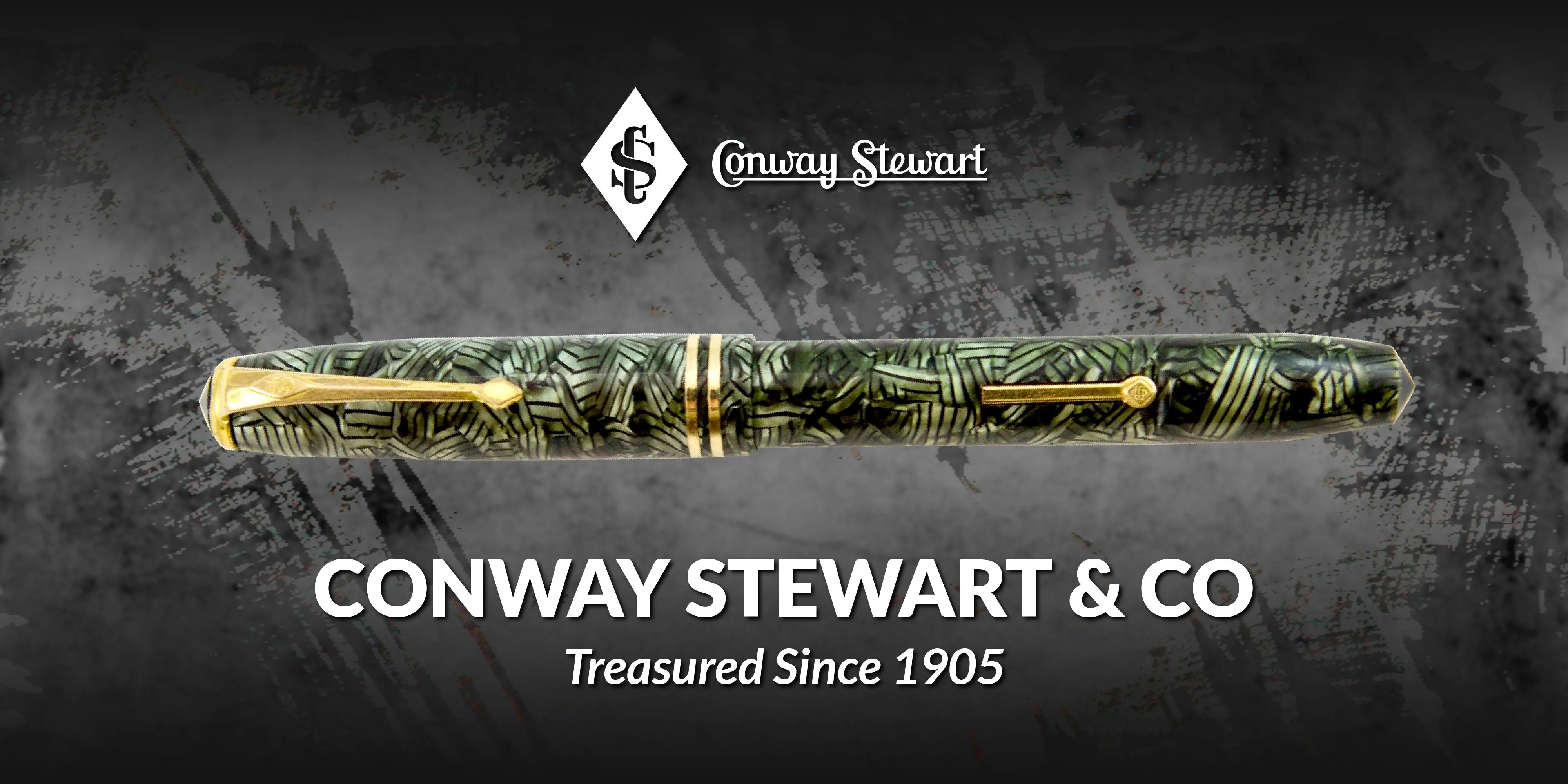
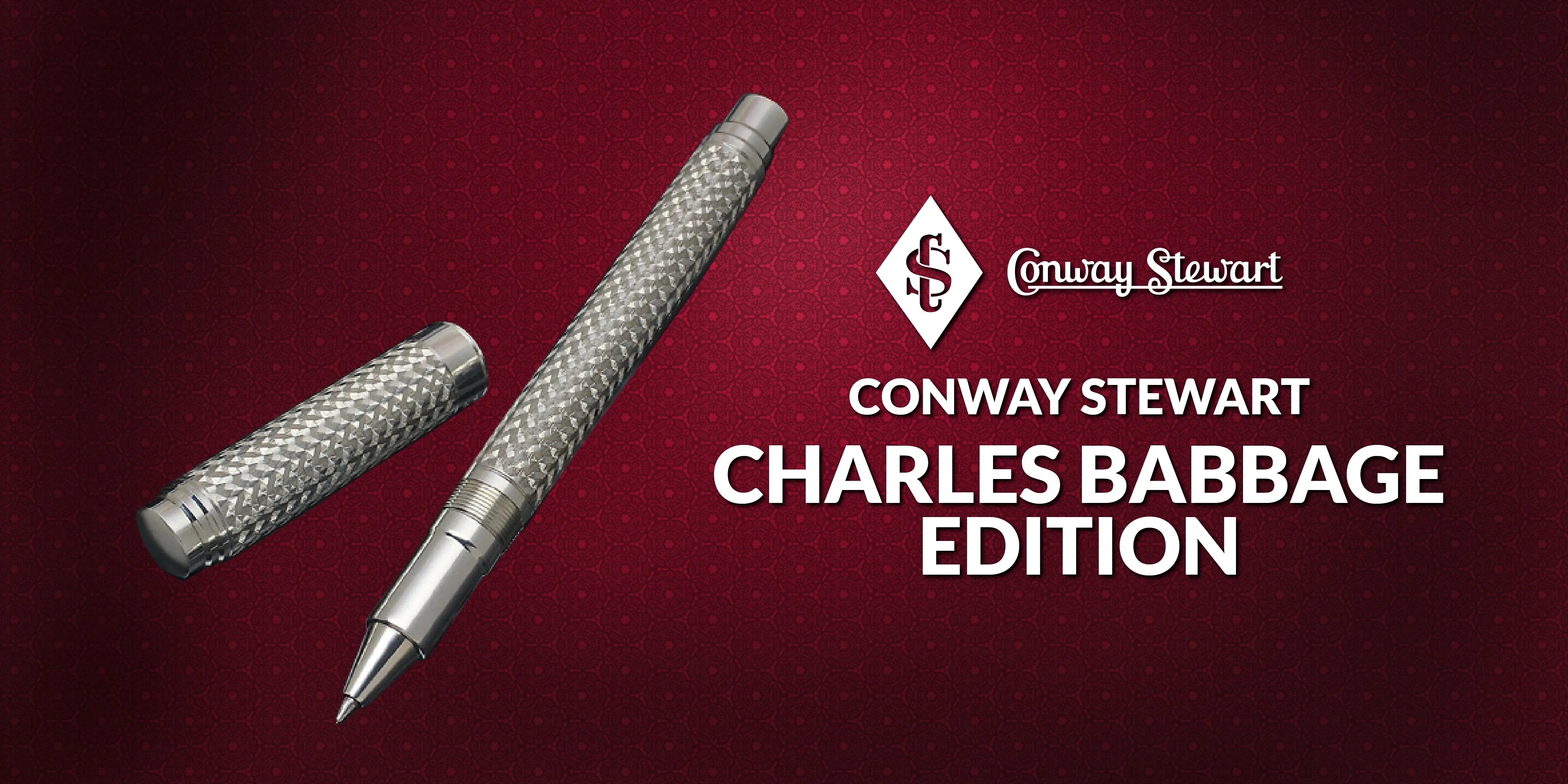


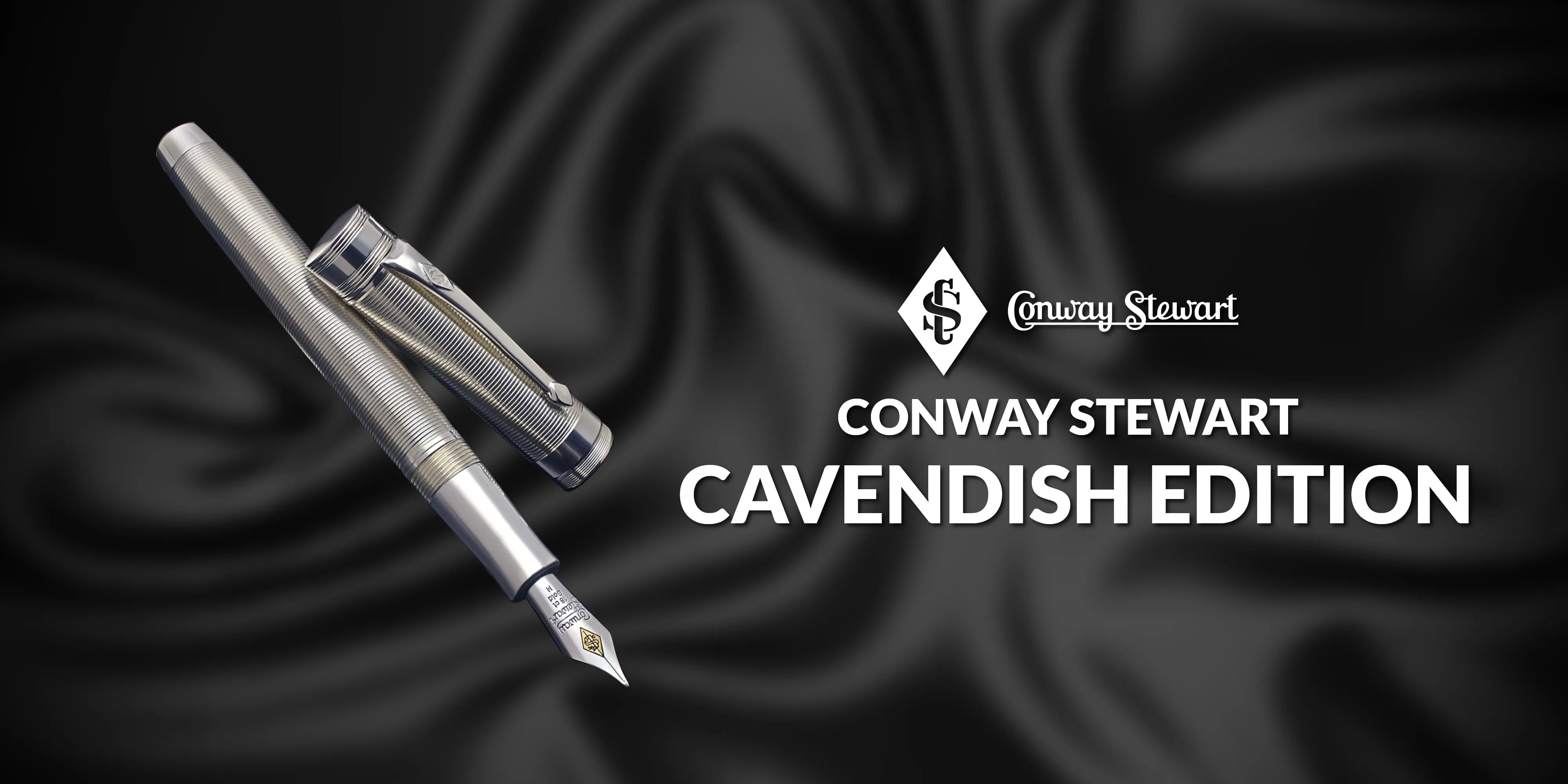
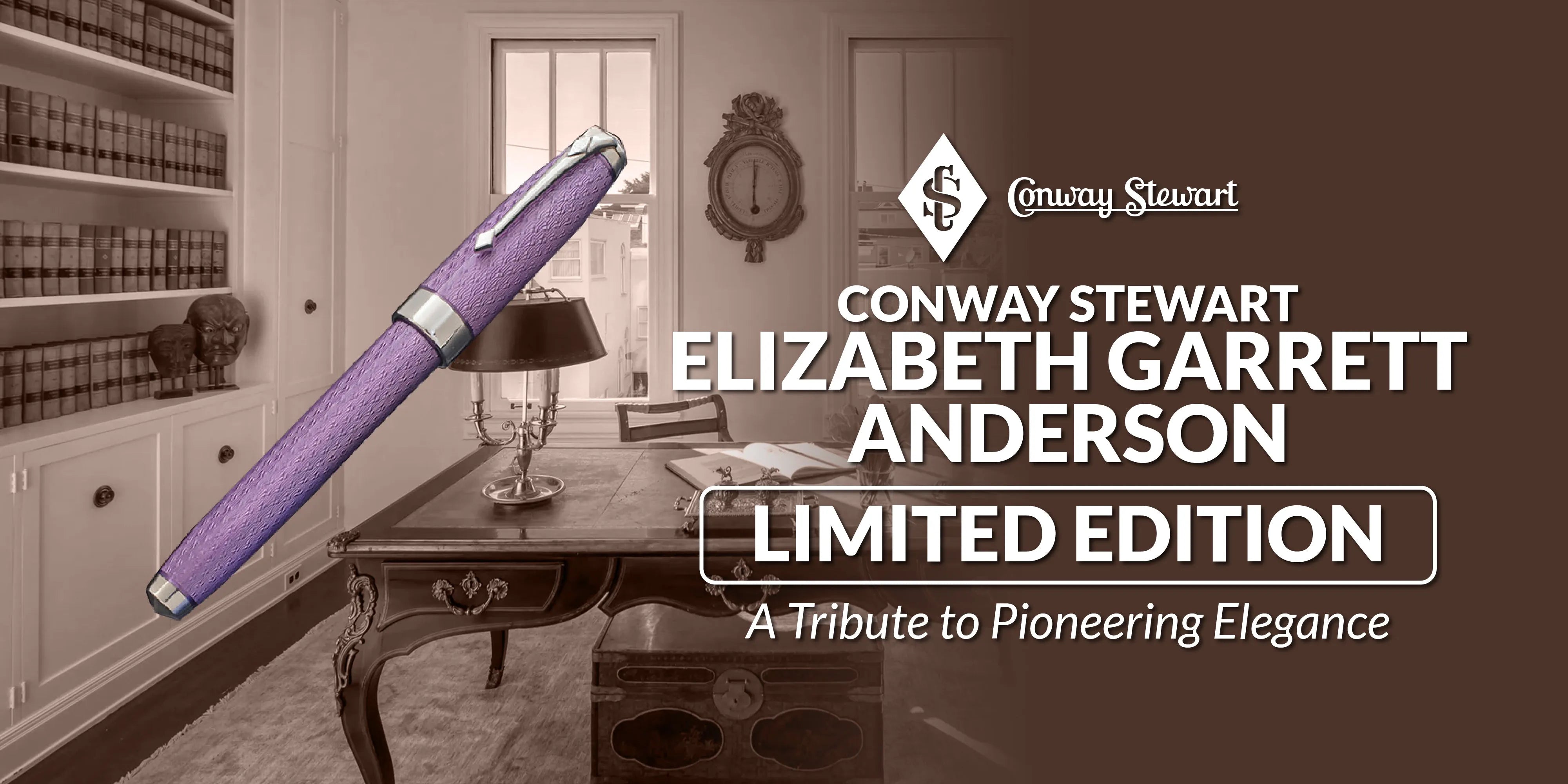


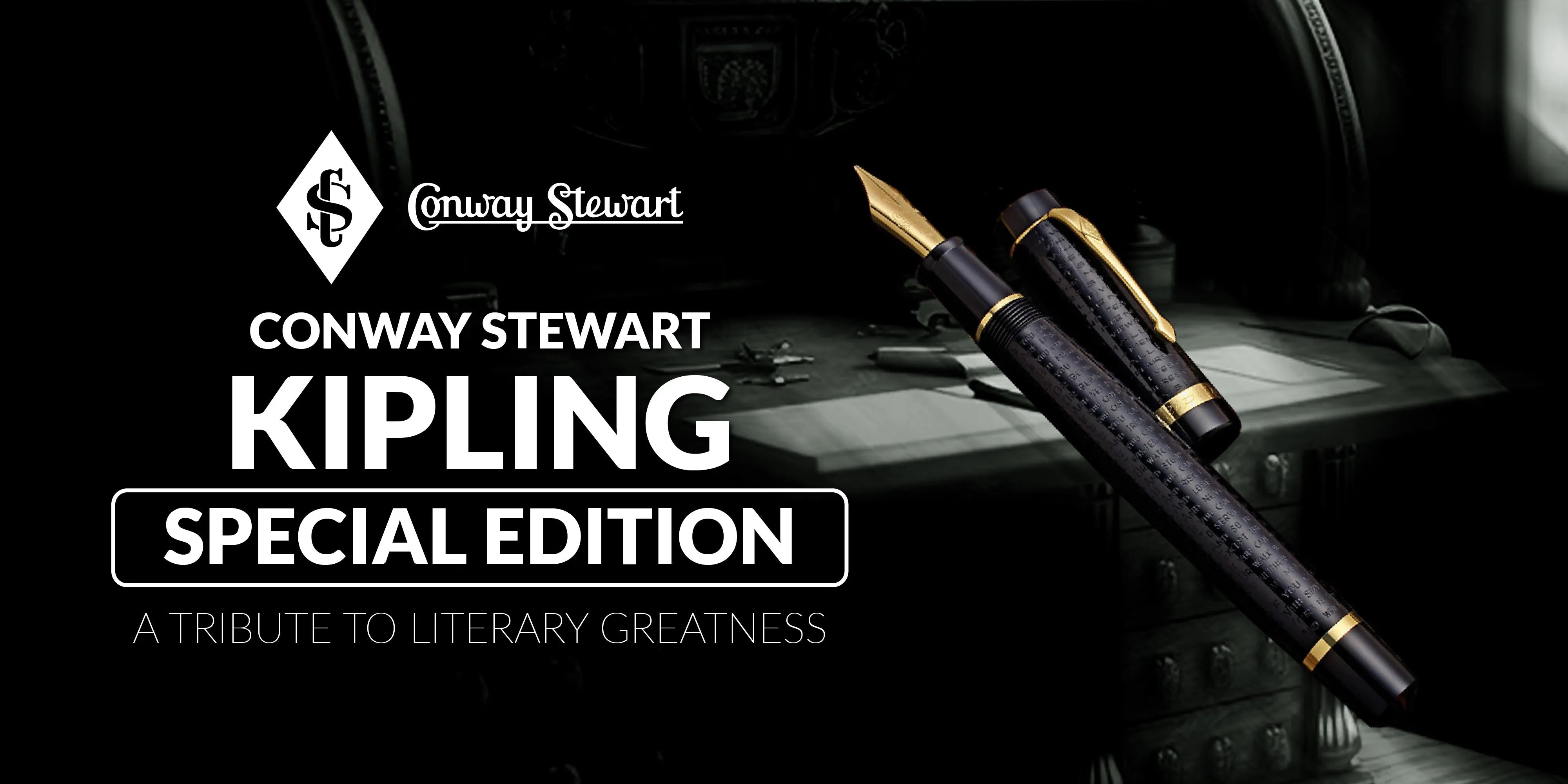
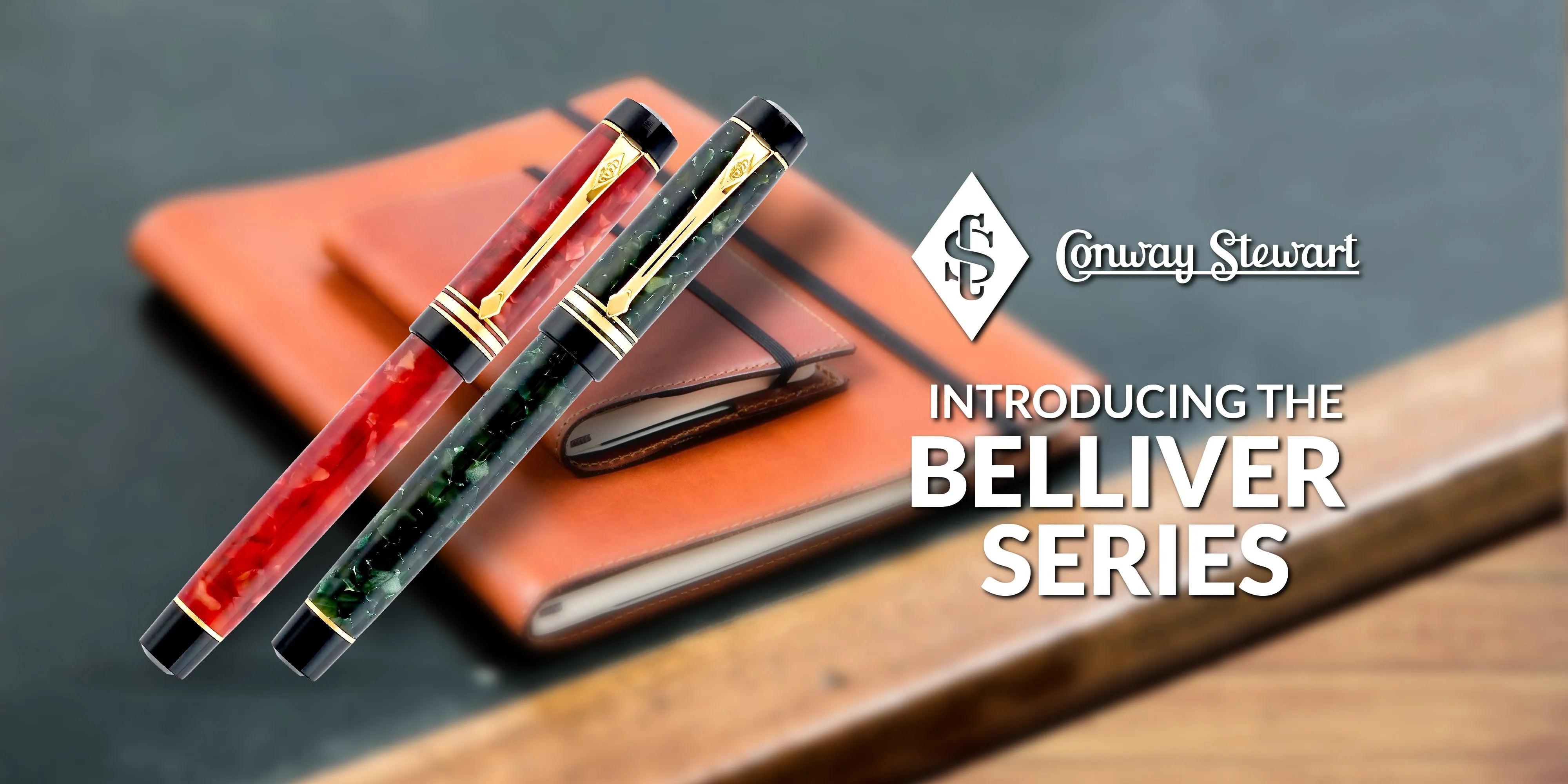

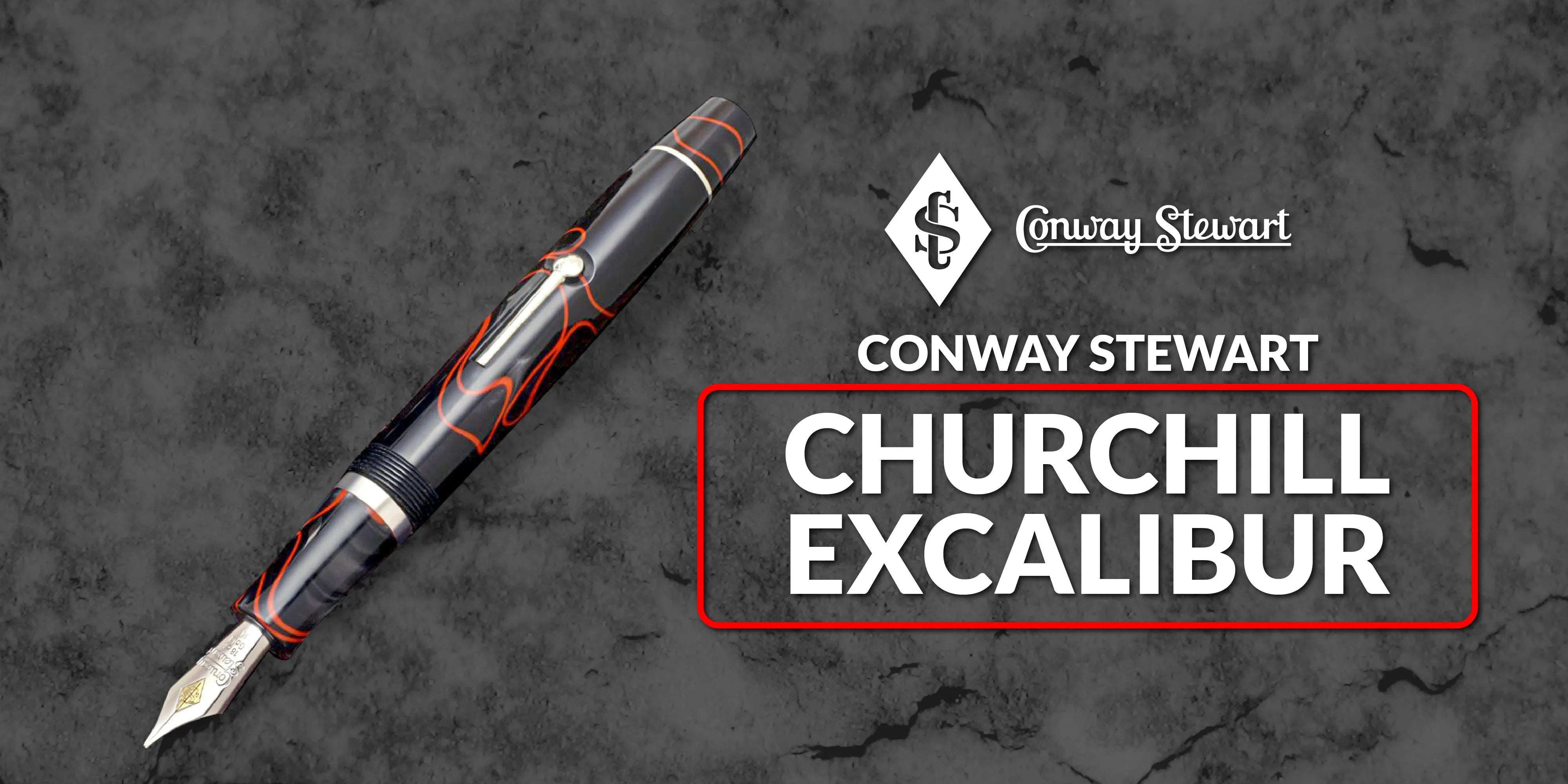
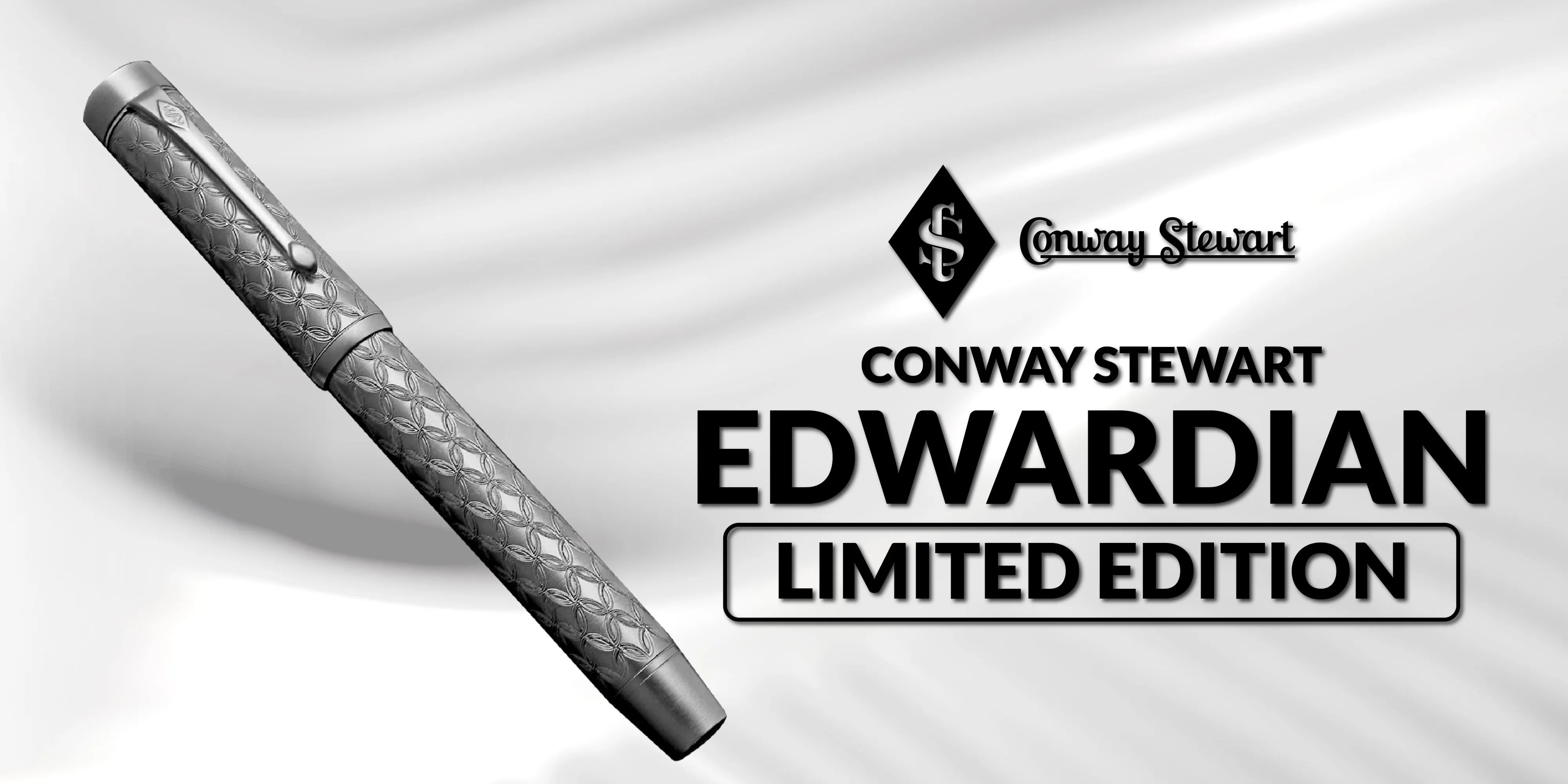



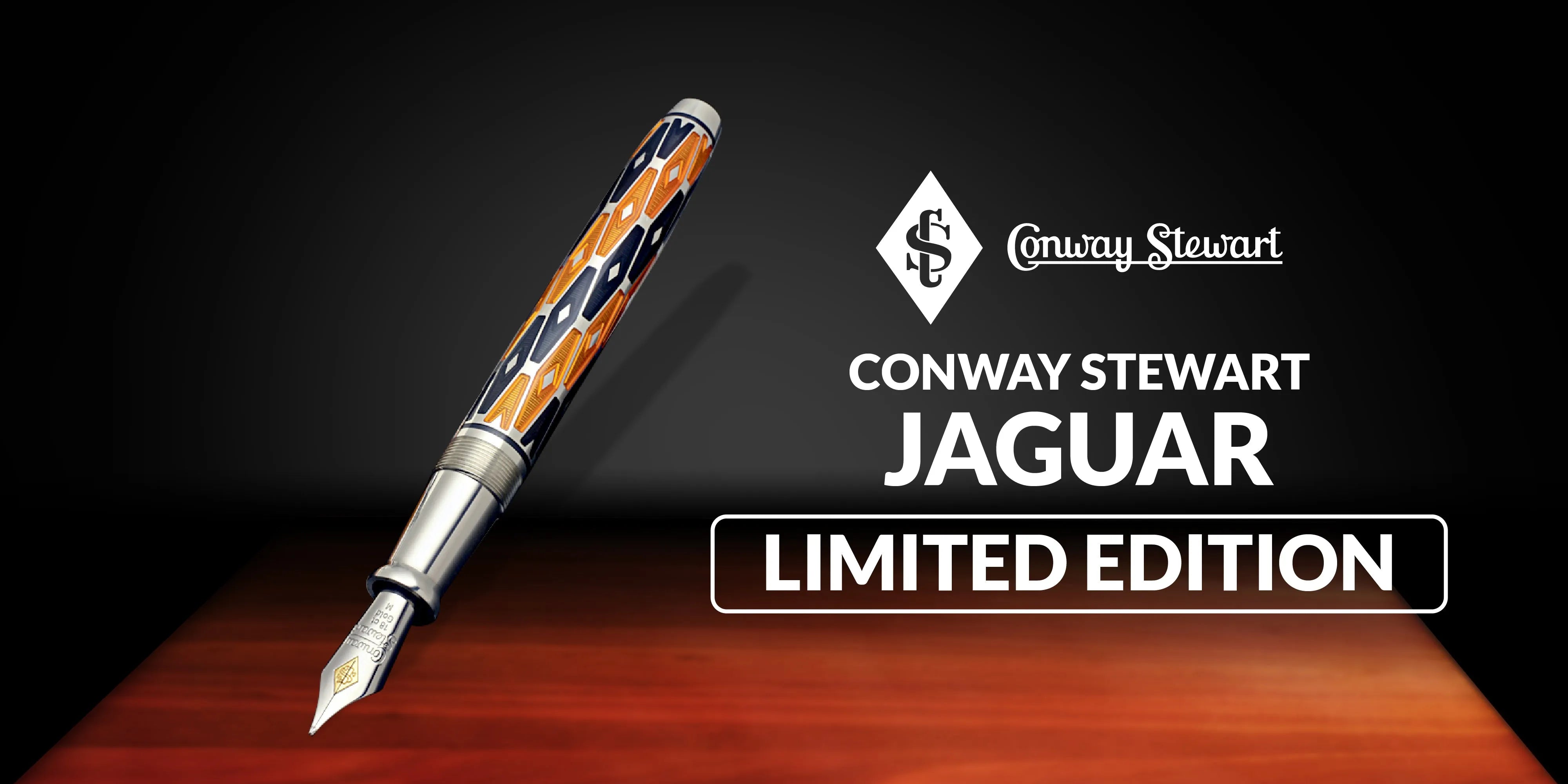


Leave a comment